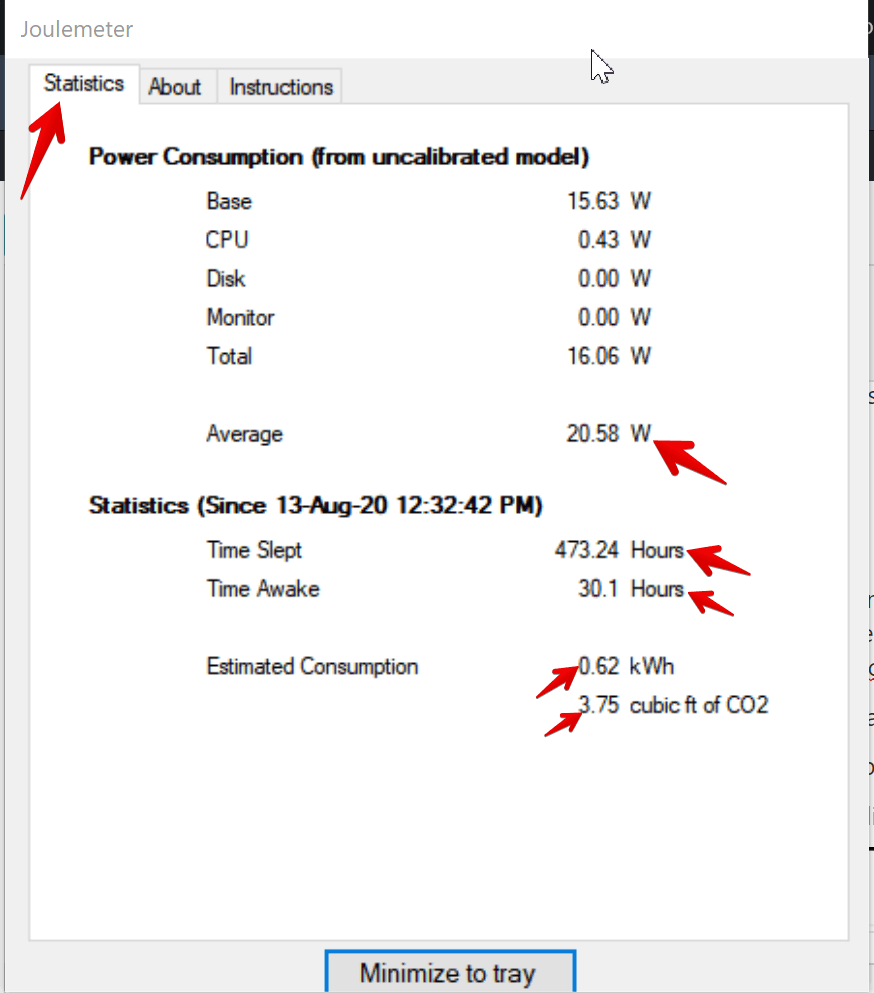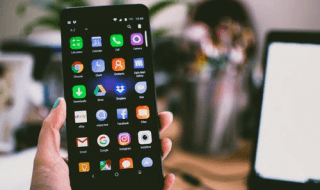Millions of laptops & desktops run on the Windows power consumption plan. Consumers don’t know much about its existence, which led Microsoft to add a balanced power plan in the Windows operating system. However, we recommend checking out the plans properly because it makes a huge difference in performance and battery life.
Contents
What is Windows 10 Power Or Energy Consumption?
Let us assume that you are running Windows 10 on your laptop, then Microsoft added a power plan for the machine. The processes running in the background use energy when you launch a program like Photoshop, VLC Media Player, etc. Microsoft tweaked the plan to ensure that users get maximum battery life and less power consumption. Heavy programs like editing software, programming software, and others consume a lot of energy. You should keep an eye on those to ensure battery life, and decrease the power bill.
How to check Windows power consumption?
Allow us to show you how you can check the power consumption in your Windows 10 PC. The statistics show up on laptop & desktop and the latest build version. You don’t have to download additional utilities for the quick view because the information is available in the operating system itself.
Step 1: Press Ctrl + Shift + ESC button together and it will open the Windows Task Manager.
Step 2: Make sure to launch the program that you want to check the power consumption.
Step 3: I have launched Valorant and it is visible in the snapshot that is shared below.

Step 4: Scroll sideways and you can find out which process is taking high energy from your laptop battery or desktop.

As you can see above, Valorant is consuming a lot of power to run efficiently and give you the maximum output. In the same manner, you can monitor the process energy consumption and it will give you a good idea of how you can save battery life.
Microsoft’s Power Monitoring Solution
Microsoft developed Joulemeter for Windows 7 or later versions to monitor the hardware resources like CPU, HDD, RAM, and GPU. Of course, you get extensive information in Joulemeter but it is available in Windows only and I am running the program in Windows 10 (2004 build version). Make sure to read the instructions below for guidance and you can save a lot of time later on.
Step 1: Download & Install Joulemeter from Googe Drive.
Step 2: Launch the program from Windows + S and then type “joulemeter” and open as administrator.

Step 3: Open Task Manager using CTRL + ALT + ESC button.
Step 4: Once both programs are running, then put them side-by-side. Now, click on “Power Usage” in Joulemeter.

Step 5: Type the name of the program in Joulemeter and you can use Task Manager for the correct name, and then click on “Start” to begin. In my case, I wanted to find Discord power usage.

Step 6: In a few moments, the program displays accurate power usage of the Discord in real-time. It is not a constant number, and you can monitor it in real-time and know how much power is being used in the process.

Microsoft scrapped Joulemeter long back but it works flawlessly in Windows 10 edition.
You can solve the compatibility issue by locating the installed folder and open the properties of the shortcut. Click on “Compatibility,” and select Windows 7 under compatibility mode. Click on Apply, and OK to save the changes, and it will work smoothly on the latest edition of Windows 10.
Folder Location: C:\ProgramData\Microsoft\Windows\Start Menu\Programs

The concept might have been scrapped, but I found it very useful to find the exact number of power usage of programs.
Joulemeter For Laptops And Surface Devices
Steps are same as above to run the Joulemeter software, but on laptops and surface device we get the direct power consumption of the device. Please see the attached pic below

- In the above pic you may see the disk power consumption is 0.00W, it is because SSD is idle and if you are using HDD then there will be some value there as there are moving parts in HDD compared to SSD.
- For laptops the energy consumption for monitor is 2.5Watts but here it is shown as 0Watts because its connected to external display and this external display don’t draw the power from laptop instead it is separately connected to another power source.
- Power Consumption:
- BASE: The minimum power drawn by this computer when powered on.
- CPU: Additional power drawn depending on CPU utilization (changes with processor workload and frequency).
- Disk: Additional power drawn due to disk activity (changes with IO workload)
- Monitor: Additional power drawn by the monitor (changes when monitor turned on and on laptops with LCD brightness).
- Total: Total current power drawn.
- Average: Average of the total power drawn over time, since installation of Joulemeter.
- Power Consumption (from default model) implies that power data is estimated using generic power usage assumptions, based on typical usage for type of machine (laptop, desktop).
- Power Consumption (from learned model) implies that power data is estimated using a model specific to your machine and is more accurate.
- Statistics (since …) measures accumulated usage since the specified time.
- Time Slept includes time when the machine was in Sleep, Hibernate, or Shutdown modes. Power usage in these modes is negligible for most machines.
- Time Awake indicates the total duration for which the machine was on.
- Estimated Consumption indicates the total energy used by the machine. The error in the estimate depends on the power model used. The error is low when the Power Consumption section shows “from learned model.”
- Calibration
- Learn a power model for your machine to get more accurate power data. For laptops, when the battery is at least 75% charged, disconnect the power cord. For desktops, connect a WattsUp meter (see instructions at the project webpage). Then, go to the Windows Start button, find the Joulemeter folder in your programs, expand it, and start Joulemeter Calibration.
How to add Power Usage & Power Usage Trend?
Microsoft added important statistics in Task Manager by default, and it came from 20 years of experience. However, you might have mistakenly disabled it or someone else did it. The good news is that you can always add them back to the Task Manager because it is customizable.
Step 1: Press Ctrl + Shift + ESC button together to open the Windows Task Manager.
Step 2: Place the mouse cursor on “Status” and right-click mouse for more options.
Step 3: Click on “Power Usage“ & “Power Usage Trend” to add them to the list.

That’s it; you have successfully added Windows Power Consumption options in the Task Manager. You can monitor the program’s energy consumption, and it will make a huge difference in battery life.
How to select Power Plan in Windows?
If you want to take control over the plan, and want to make adjustments, then Microsoft added a dedicated panel for the users. You can choose between three plans, and even customize one according to your requirements.
Step 1: Press Windows + S and then click on “Control Panel” to start the process.
Step 2: Click on “Hardware & Sound” to continue.
Step 3: Find & click on “Power Options” in the panel.
Step 4: Now, you can select between balanced, power saver, and high performance.

Users can select between three plans and choose one according to your requirements.
Balanced: Microsoft added the plan for laptops & desktops, which offers stable performance and save energy anywhere it can. Overall, if you have good battery backup & stable performance, then stick with it.
Power Saver: Windows will reduce CPU, RAM, GPU, HDD/SSD performance to conserve energy. The performance decline is noticeable, and it is not pleasant for entry-level laptops.
High Performance: We are using a “high performance” profile for our gaming rig because it needs maximum energy to produce a higher FPS (frame rate per second) in the game.
We recommend testing the plans for one day and it will give you an excellent idea of the performance. Remember, the results will be different for every desktop & laptop as we tend to use different hardware & software.
Bottom Line
Readers can check Windows power consumption of every program running in the background, and find out what is draining your laptop battery. Readers can create a custom plan and reduce energy consumption to increase battery backup, and work for longer hours. Let us know what do you think about the Microsoft default power plan in the comment section below.



